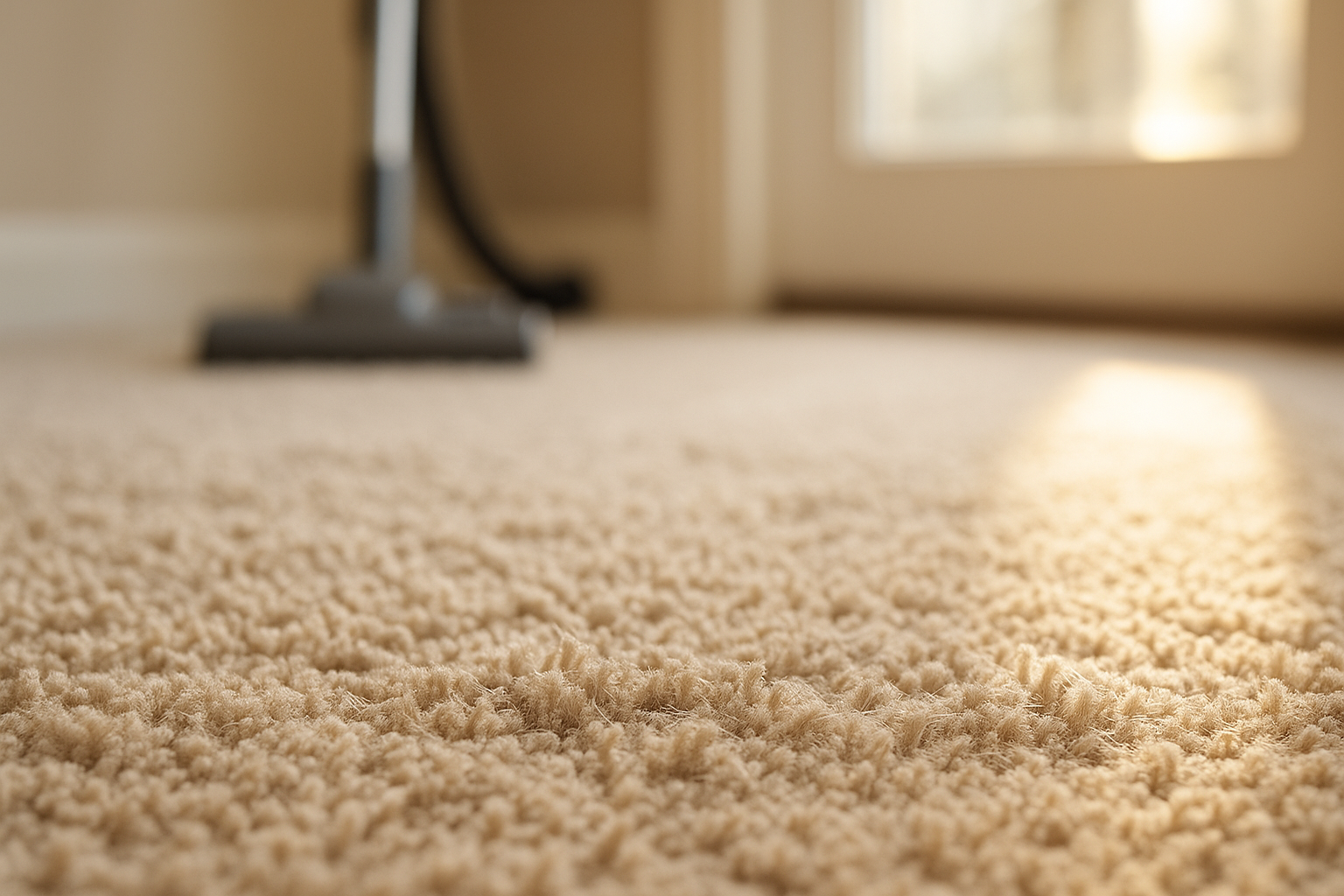Carpet remains one of the most popular flooring choices for homeowners who value comfort and warmth. It’s soft underfoot, helps with sound insulation, and adds a cozy feel to any space. But even the best carpets don’t last forever—so how long should you expect yours to hold up before it needs replacing?
Average Carpet Lifespan
The average carpet lasts between 5 and 15 years, depending on material quality, household traffic, and maintenance habits. Many homeowners start noticing wear around the 7-year mark, but high-quality carpets that are well cared for can easily last a decade or longer.
- Budget-grade carpet: 3–5 years
- Mid-range nylon or polyester: 7–10 years
- Premium wool or SmartStrand fibers: 12–20 years
Ultimately, your carpet’s lifespan reflects how it’s made and how it’s maintained. Even inexpensive carpet can last longer with consistent care and low traffic, while premium carpet will wear down faster under heavy use if neglected.
What Affects How Long Carpet Lasts?
Several key factors influence how long carpet stays in good condition. Understanding these can help you choose wisely and extend your flooring’s lifespan.
- Material type: Wool and nylon are more durable than polyester or olefin. See our Carpet Material Guide for a full comparison.
- Density and pile height: Low-pile, tightly woven carpets resist matting better than high, fluffy piles in busy areas.
- Foot traffic: Hallways, stairs, and living rooms experience more wear than bedrooms or guest spaces.
- Maintenance habits: Regular vacuuming, spot cleaning, and annual deep cleaning can double a carpet’s usable life. Visit our Carpet Care Tips for best practices.
- Sunlight exposure: UV rays can fade color and weaken fibers over time. Using curtains or rugs can help preserve color.
How to Tell When It’s Time to Replace Carpet
Most carpets don’t fail suddenly—you’ll notice gradual changes in appearance and texture that signal it’s time for replacement. Here are some of the most common signs:
- Worn or matted fibers: High-traffic areas look flat or rough even after vacuuming.
- Persistent stains or odors: When cleaning no longer removes discoloration or smells, fibers may be permanently damaged.
- Visible damage: Tears, fraying edges, or bare patches where backing shows through are clear signs of wear.
- Allergy symptoms: Older carpets can trap dust and allergens that affect indoor air quality, even with regular cleaning.
- Outdated appearance: Style and color may fade or clash with newer home décor after years of use.
Tips to Make Carpet Last Longer
- Vacuum frequently: At least twice a week in high-traffic areas to remove dirt that wears down fibers.
- Deep clean annually: Use professional steam cleaning or a high-quality machine to lift embedded debris.
- Use area rugs and runners: Protect entryways, stairs, and hallways where wear occurs fastest.
- Rotate furniture: Shifting layout occasionally prevents crushing and uneven fading.
- Invest in quality padding: A good carpet pad absorbs impact and extends carpet life by reducing stress on fibers.
Choosing Durable Carpet for Your Next Upgrade
If you’re replacing old carpet, look for brands known for long-lasting materials and warranties. Our guide to the best carpet brands covers trusted names like Mohawk, Shaw, and Karastan, along with insights on which fibers and constructions hold up best under real-world use.
Ultimately, with the right material, installation, and care, your carpet can remain soft, beautiful, and durable for well over a decade—proving that good flooring is both an investment and a comfort you’ll appreciate every day.
